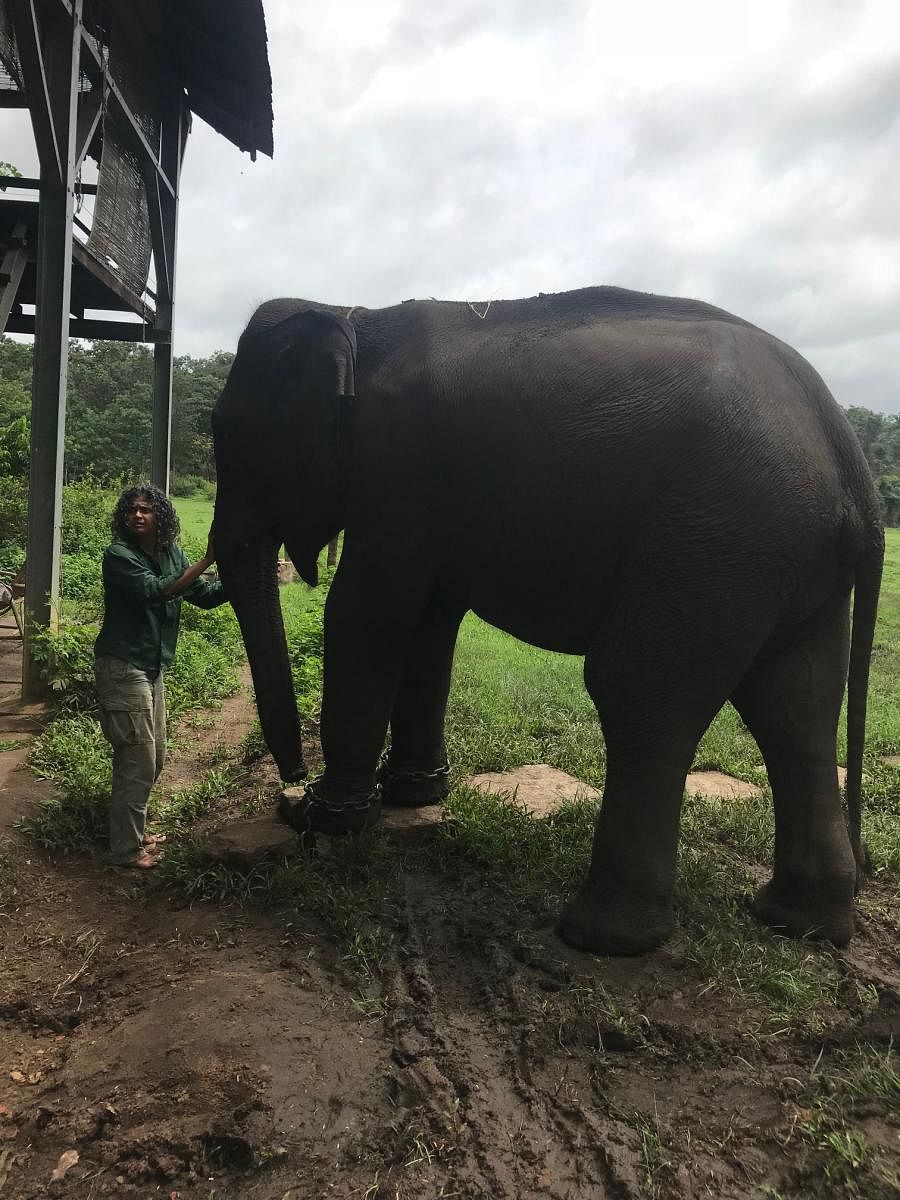Go, but don’t let go,” she says, “continue to dream and look for your freedom.” A vibrant personality who has broken ties with monotonous routine, Prajna Chowta has carved a niche as a researcher, conservationist and a documentary filmmaker. One of the few trained women mahouts in the country, Prajna is known for her tryst with forests, particularly elephants and has inspired a generation. After completing her Master’s degree in anthropology and art history in England, Prajna looked forward to working with tribal people, who she says, “are linked closely to nature and the old way of living.”
First of its kind
“I finished my masters and married Philippe Gautier. Once when we went to a temple we saw an elephant with the mahout, and that’s when Philippe asked me the question – ‘Do you know the relationship between a mahout and an elephant?’ While I had witnessed the ties between a mahout and an elephant at various temples and camps, I did not know the root of this relationship.” This probing question from her husband led her to various elephant camps, which in turn shifted her interest from ethnic tribal groups to elephants.
Today, Prajna is the co-founder and managing trustee of ‘The Aane Mane Foundation’, which is functioning with the purpose of conserving elephants and their habitats. At the foundation’s base camp located in the forest belt of Nagarhole, Prajna takes a walk with her elephant calf, Dharma, and feeds him while she talks about her observations. “I visited many elephant camps across India and found that elephants were not looked after properly and were kept in very bad conditions; in intense captivity in temples, zoos and even as private properties. I wanted to do something positive and that is when I, along with various experienced personalities, started The Aane Mane Foundation in 2000,” she narrates.
However, her first breakthrough came with her film Hathi, directed in 1996-97 by her husband and filmmaker Philippe Gautier. The film became the first of its kind to narrate the relationship between a mahout and an elephant. Real mahouts were part of the film, which is a rarity. She also acquired the first-hand experience of that relationship. “I went looking for camps that would accept me to train as a mahout. I travelled to camps in Bihar, Karnataka, Tamil Nadu, Kerala and Assam; however, I was asked by some officers – Why does a person like you, who has completed her masters in England, want to spend time with tribes and become a mahout? Nevertheless, after seeking permission and going through a few personal contacts, I was accepted to be trained at a camp in Wayanad,” she recalls, “It was liberating to become a mahout.”
Then a budding anthropologist who found her passion in elephants, she has not stridden an easy path. “I face challenges every time. But the strength lies in fragility. And being a woman did not stop me from doing what I want.” She travels back and forth — from France (where her daughter Ojas is pursuing her studies) to India and leads her life between two jungles — “a real jungle and a concrete jungle,” she says. Yet, “I like being on the field. The freedom of living with not much and liberating oneself from materialism is what I seek and is what I am doing,” she adds.
An author, scriptwriter and a researcher, she has faced endless challenges in her journey of protecting the keystone species. “Elephants are our contemporaries, they teach us a lot about ourselves. You take out the keystone in an arch, the entire arch, which is the entire ecological system, collapses …that’s how important elephants are,” she explains.
Living in the old style in a machan with trunks filled with books, she has become one with nature and its elements. While she is put up in the jungle, Prajna spends her time feeding her two elephants at the base camp of the foundation and later lets them free to graze in the forests. With the Jenukuruba tribe people working alongside her at the foundation, she spends quality time with them and carries on her research work at the camp.
Constantly in a confrontation with the developing, urbanised society, she has dedicated her life to the lifetime project of conserving elephants and the traditions that surround them. “The relationship between humans and elephants in India is over 4,000 years old. Elephants have evolved from being malevolent animals to being worshipped as benevolent gods. Our culture has been able to achieve this unique transformation. We should remember what it means,” she says.
Breaking away from routine
Through ‘The Aane Mane Foundation’, she has made a significant impact, and she says, “I just continue to do what I do.” The foundation has studied in-depth the relationship between humans and elephants and is striving to keep the tradition of mahouts alive with modernised techniques while devising innovative methods to mitigate the conflictual interaction which has recently developed between farmers and elephants.
While spreading the basics of keeping elephants in peaceful interactions, the foundation has contributed to the first genetic comparative analysis of the Asian elephant populations. “We showed that migration routes of elephants still exist between Burma and Arunachal Pradesh. Elephants don’t need passports and visas to migrate,” she adds. She has also recently written a historical study of the Andaman elephants. Working discretely and managing funds through film-making, Prajna treads between the concrete and real jungle and concludes, “Keep observing, learning and break away from routines. One has to have variations in ones routine or it will just kill you.” To know more about Prajna’s work, log on to www.aanemane.org.
